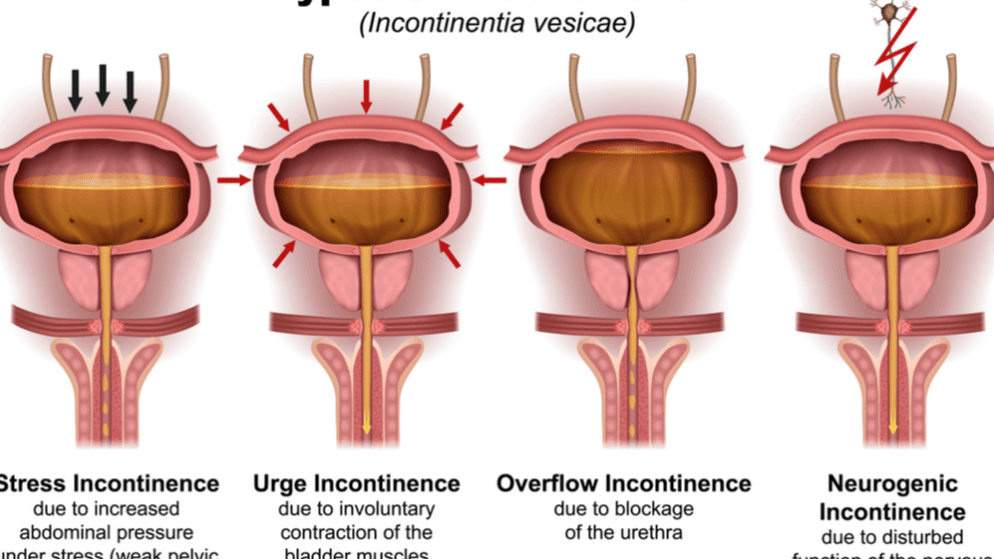



Get new exclusive access to healthcare business reports & breaking news




Holding in your pee for long periods, while not advisable, is doable. Doctors say the bladder can hold your urine for up to ten hours before it needs to tell you that you need to go. In emergencies, it can go up for a few more hours to accumulate more urine.
With urinary incontinence (UI), however, holding it in is out of the question. You can’t go about your daily routine without being interrupted by an urge to tinkle every few hours or so. Imagine being unable to hurry to the restroom because you’re giving a crucial presentation, stuck in an absurdly long line, or even trying to bring home the gold.
UI affects people from all walks of life, so it’s odd that female athletes rarely get any serious attention. Researchers found that such cases often go underreported, making their purported impact on sports and physical activity less than what it actually is. Athletes and their trainers should be more aware that this kind of UI exists and affects their performance.
To better understand how uncomfortable UI can be, it’s essential to know first how your body’s urinary system works. As your blood carries waste products, the kidneys collect them as it enters them. Each kidney is connected to a ureter where the urine flows down to the bladder, awaiting release via the urethra. Here’s a diagram to help you picture the process:
A normal-sized bladder can hold up to 16 ounces or 2 cups of urine, which can take up to 10 hours to fill. It’s also capable of expanding a bit more to gather more urine in serious situations. Doctors advise emptying the bladder every three hours, whether or not you feel the need to.
For UI, the issues depend on the type of incontinence. According to the National Institute on Aging, UI can fall under one of four such types (though a combination of more than one type isn’t unusual):
Stress UI is the most prevalent type among female athletes, with prevalence rates between 18% and 80%. Furthermore, according to a 2002 study by Danish researchers, gymnastics (56%) has the highest occurrence of urinary leakage, followed by ballet (43%) and aerobics (40%). The same Danish study also pointed out that stress UI occurred more during training than the actual competition, with jumping often seen as the trigger.
Fortunately, UI treatment options have grown over the years, ranging from lifestyle changes to surgery. To help them cope while under treatment, female athletes wear absorbent clothing like incontinence underwear. The triple-layer system of anti-odor, absorbent, and leak-resistant layers can catch as much as eight tablespoons of leaked urine.
Now that you have an idea, here’s how UI can ruin an athlete’s day:
No one likes to experience even the slightest leakage during training or the big game; it’s just not normal. Even if a female athlete did, she most likely wouldn’t admit it to her trainer or coach due to embarrassment. While it’s reasonable, non-disclosure will only leave everyone in the dark and delay much-needed treatment.
UI is a big deal among women. In a survey of 150 people, researchers at the Medical University of Vienna found that six out of ten people considered UI taboo, a topic more shameful to openly discuss than depression and cancer.
This shame can carry over to their overall performance, leading to them retiring from sports or physical activity. However, it doesn’t stop there. According to some studies, even after retiring, women with severe UI can develop symptoms of depression and anxiety. They’re also less likely to develop sexual relationships.
In a recent but significant discovery, doctors found that having low energy can contribute to UI. Low energy, in simple terms, is a result of not having enough calories to meet the demands of training and other routines.
Researchers at the Boston Children’s Hospital came to this conclusion after surveying 1,000 female athletes enrolled in its female athlete program. Regardless of the sport, athletes who don’t have enough energy can compromise some bodily functions, including bladder control.
Doctors say the reason for this can be traced to stress and the person’s adrenal gland response. As the body considers intense workouts as stress, the adrenal glands release hormones to regulate fluid balance, blood pressure, and other factors. While this is normal, without adequate rest and nutrition, the glands keep producing these hormones, resulting in stress.
In a way, you can say that UI is a sign of stress. Unable to manage stress can result in burnouts and a drop in self-esteem, which UI can also cause. It doesn’t take a lot to spot a stressed athlete, one who’s not doing too well in training.
Aside from wearing absorbent underwear, female athletes also cope with UI by cutting back on fluid intake before training or the competition. However, this method is somewhat controversial.
One case during the 2016 Rio Olympics was when French gymnasts refused to drink their nutritional fluids before their match. The drinks were supposed to be their meal, as their match was held around lunch. A subsequent survey found that every member of the team admitted to showing symptoms of UI. The issue became so prominent that France’s National Institute of Sport, Expertise, and Performance had to teach coaches about UI among female athletes.
Drinking less might seem like a promising solution; after all, it means fewer fluids will end up in your bladder. But doctors say you’ll only irritate your bladder more as the urine in the bladder becomes more concentrated. However, they also agree that drinking too much water will also put undue stress on the bladder.
Furthermore, drinking less also means depriving your body of nutrients it needs as you break a sweat. It should be a no-brainer that athletes need to stay hydrated, given that they’ll lose a lot of water through sweat. Losing just 1% of your mass through sweat can cause many problems, such as increased body temperature and heat stroke.
As mentioned earlier, female athletes are reluctant to disclose their UI symptoms to their trainers and coaches. Nevertheless, they shouldn’t be afraid to admit it, as going along with the condition without seeking treatment can lead to something worse.
One serious complication is UTI, an infection that occurs at least once among a third of women aged 24 or below. UI and UTI are mutually related; UI increases the risk of UTI, while UTI can cause UI. Harmful bacteria such as enterococci and staphylococci have been recorded in some hospitalized athletes.
Athletes with UTI would be restricted from participating in any competition, let alone training. The resulting pain in the pelvic area caused by the infection would seriously hinder performance. On top of that, they may feel the urge to go more frequently than with UI, ruining their timetable.
Given enough time, UI can cost any female athlete their entire sporting career. However, there are ways to manage it, starting with an open discussion with their trainer or coach. By making the right people aware of the problem, they can take the appropriate steps, perhaps by making minor adjustments to the training regimen.
Some simple lifestyle changes also help manage UI immensely. Instead of downing drinks that encourage urination like coffee and tea, consider switching to more water. Taking small sips of water throughout the day can ease the burden on your bladder. Consider drinking your last glass for the day three hours before bedtime to lessen the need to go in the middle of the night.
A change in overall diet may also be in order. Doctors recommend a vitamin-rich diet, namely loaded with vitamins C and D, to reduce incontinence episodes. Supplements can help meet the daily requirement, but fruits and vegetables are better choices. Fiber-rich foods can also lessen incontinence by relieving pressure exerted by constipation or bowel problems.
If you have UI and are taking medications regularly, consult your doctor right away. Diuretics, for instance, are prescribed for people with high blood pressure by increasing the rate of water and salt expulsion in the body. The removal goes by way of the urinary system, so a change in medication may be necessary.
Athletes should not keep health problems, including UI, to themselves. They must take steps to manage their condition before it becomes a career-ending one.